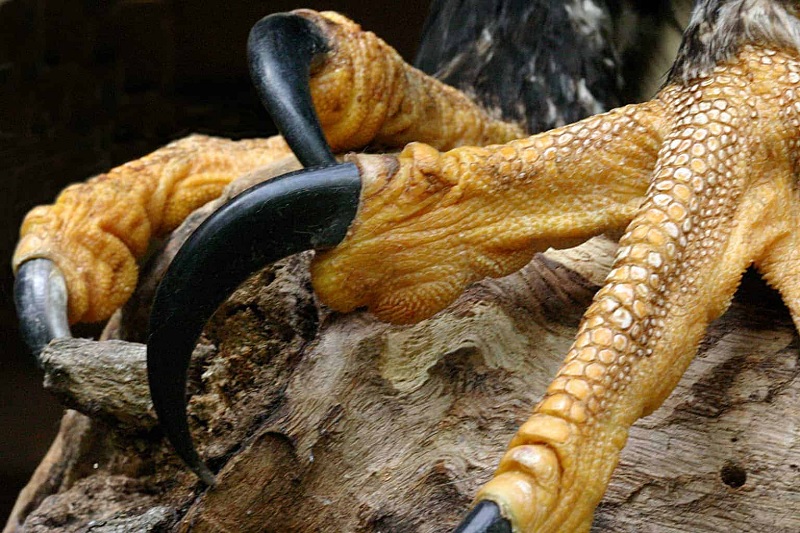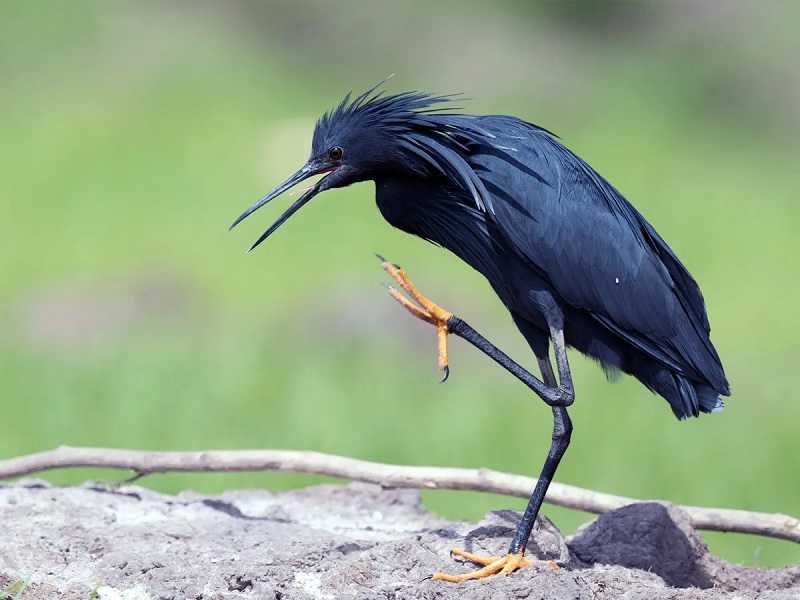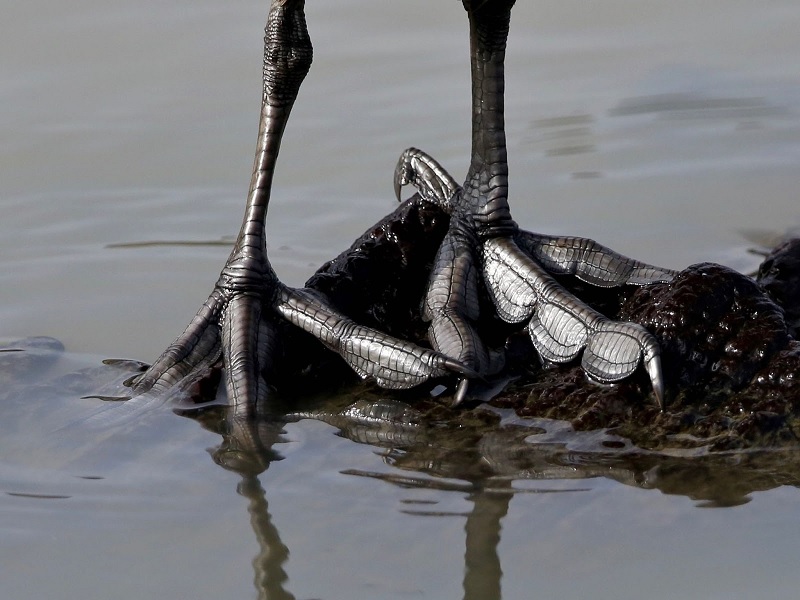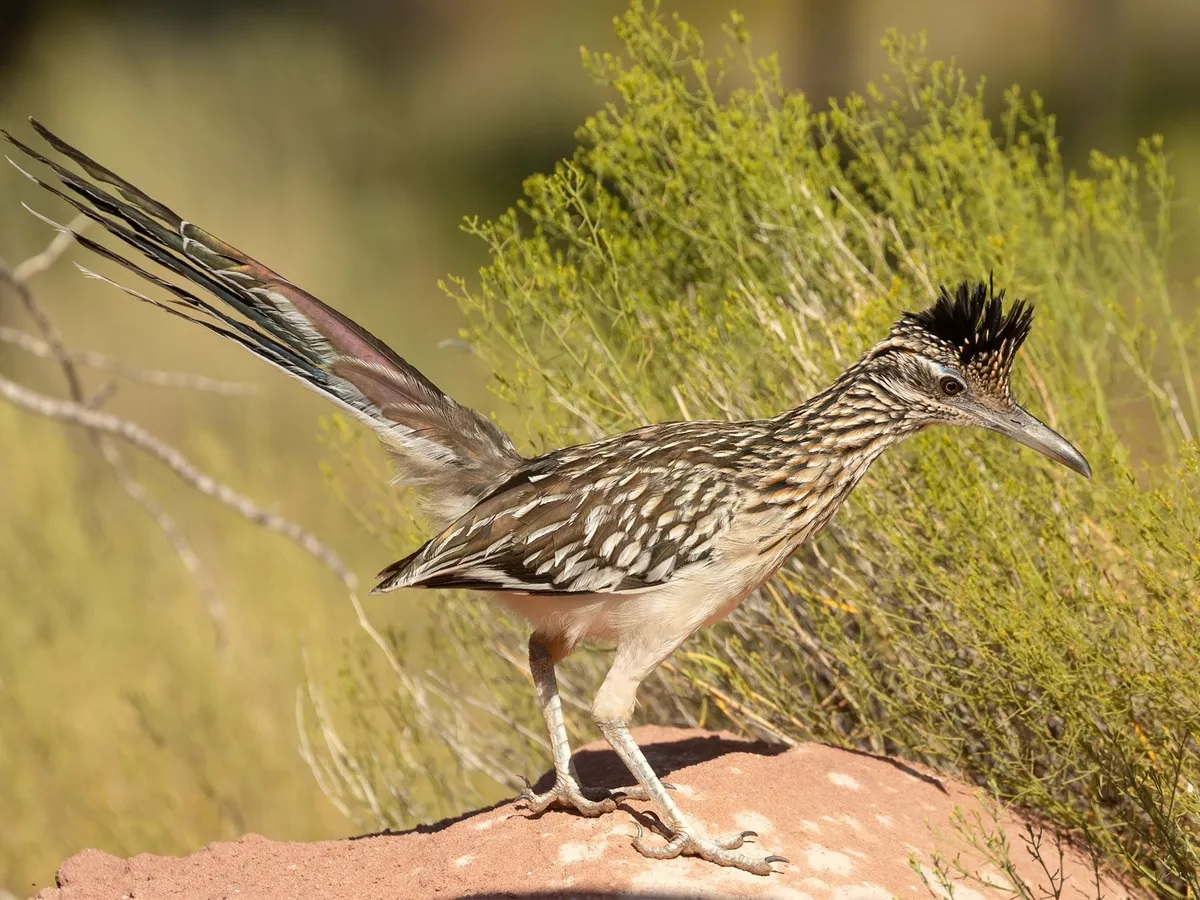Birds are unique creatures, and their anatomy is specially adapted to suit a wide range of lifestyles, environments, and behaviors. One of the most interesting aspects of their anatomy is their feet, which play crucial roles in perching, hunting, swimming, and walking. Many people often ask the question what are bird feet called, curious about the specialized terminology used to describe them. Bird feet are not just ordinary limbs; they are complex structures made up of toes, claws, and scales, each designed for specific functions.
From the strong talons of eagles to the webbed feet of ducks and the delicate perching feet of songbirds, each type serves a distinct purpose. Understanding what bird feet are called and how they function provides deeper insight into the way birds live, move, and interact with their environment, highlighting the fascinating diversity of avian life.
General Terminology
Understanding the general terminology related to bird feet is essential for anyone studying or observing birds. Bird feet are highly specialized, with various parts serving unique functions that reflect their habits, habitats, and evolutionary adaptations. Familiarity with these terms helps you identify species, understand behaviors, and appreciate the diversity of avian anatomy.

Toes and Phalanges
Bird toes are composed of several bones called phalanges, which determine the number and flexibility of each toe. Most birds have three forward-facing toes and one backward-facing toe, though variations exist depending on their lifestyle and habitat. For example, perching birds often have a strong backward-facing toe, known as the hallux, which helps grip branches securely. The length and arrangement of toes affect how birds walk, perch, and hunt. Recognizing the terminology and structure of toes and phalanges allows you to understand the specific adaptations that enable birds to move efficiently in their respective environments.
Claws and Talons
The tips of bird toes end in claws or talons, which are critical for grasping, hunting, or defense. Claws are typically curved and sharp, allowing perching birds to hold onto branches or fence posts. Talons, found in raptors like eagles and hawks, are larger and more powerful, designed for capturing and killing prey. The shape, size, and strength of these structures vary widely among species, reflecting their feeding habits and survival strategies. Understanding the terminology of claws and talons helps you identify birds’ predatory abilities and their ecological roles.
Scales and Skin
Bird feet are covered with tough, keratinized scales that provide protection against abrasion, weather, and other environmental hazards. These scales are arranged in patterns that vary between species, offering insight into their lifestyle, such as wading, perching, or running. The skin beneath the scales is flexible, allowing movement and grip. Some species, like waterfowl, have webbed feet with specialized skin connecting the toes, aiding in swimming. Familiarity with these terms and structures helps you understand the functional diversity of bird feet and how different species are adapted to their ecological niches.
Webbing and Other Adaptations
Webbing is a specialized feature found in many aquatic birds, connecting the toes to facilitate swimming and efficient movement in water. Other adaptations include lobed toes in birds like grebes or elongated claws for climbing in woodpeckers. These variations demonstrate how terminology relates to function, as understanding terms like webbing, lobes, or hallux reveals the evolutionary strategies birds employ. Recognizing these structures helps you appreciate the wide range of bird adaptations and provides insight into their behavior, feeding methods, and interaction with different habitats.
Types of Bird Feet
Bird feet are highly specialized structures that vary widely depending on the species’ lifestyle, habitat, and feeding behavior. Each type of foot is adapted to specific functions such as perching, hunting, swimming, or walking. Understanding the different types of bird feet helps you identify species and appreciate their evolutionary adaptations in the natural world.

Perching Feet
Perching feet, also known as anisodactyl feet, are common among songbirds, sparrows, and robins. These feet typically have three toes pointing forward and one toe pointing backward, forming a strong grip for perching on branches, wires, or ledges. The backward-pointing toe, called the hallux, allows birds to cling securely while resting or sleeping. Tendons in the legs automatically tighten when the bird bends its legs, locking the toes around the perch without effort. This adaptation is crucial for birds that spend long periods resting or nesting in trees, allowing them to maintain balance and avoid falling while conserving energy.
Climbing Feet
Climbing feet, often found in woodpeckers and nuthatches, are designed for vertical surfaces like tree trunks. These feet are zygodactyl, with two toes pointing forward and two pointing backward, providing a strong and stable grip for climbing and clinging to bark. The sharp claws dig into the surface, helping birds maintain balance while searching for insects or carving nest cavities. This foot structure allows efficient upward and downward movement along trees, making it essential for species that rely on climbing for foraging or protection. Climbing feet reflect specialized evolutionary adaptations to arboreal lifestyles.
Swimming Feet
Swimming feet are adapted for aquatic environments and are commonly seen in ducks, geese, and swans. These feet are webbed, with skin connecting two or more toes, enabling efficient propulsion through water. The broad surface area of webbed feet acts like a paddle, allowing birds to maneuver, dive, and maintain balance while swimming. Aquatic birds often have strong leg muscles to complement webbed feet, enhancing swimming speed and control. These feet are crucial for feeding, escaping predators, and navigating water habitats. Variations in webbing also exist, such as partial webbing or lobed toes, depending on the species’ swimming style.
Grasping and Predatory Feet
Raptors, such as eagles, hawks, and owls, have grasping or talon feet adapted for hunting and capturing prey. These feet feature sharp, curved claws capable of piercing and holding animals, while the strong toes provide a powerful grip. The foot structure allows raptors to carry prey in flight and maintain control over struggling targets. Talons vary in size and strength depending on the bird’s diet, from small rodents to larger animals. This type of foot exemplifies how morphology aligns with feeding behavior, demonstrating the precision and efficiency of predatory adaptations in birds.
Walking and Wading Feet
Walking and wading feet are common in shorebirds, herons, and storks, designed for stability on soft or uneven surfaces. These feet often have long toes that distribute weight, preventing birds from sinking into mud or sand. Some species, like herons, also have partially webbed or lobed toes to aid in movement through water. These feet support foraging in shallow waters, allowing birds to hunt fish, insects, and small invertebrates. The combination of long toes and strong legs enhances balance and mobility in wet or unstable habitats, reflecting adaptation to wading lifestyles.
Perching and Scratching Feet
Chickens, turkeys, and pheasants exhibit perching and scratching feet. These feet are designed for walking, scratching the soil, and perching on low structures. The toes are strong, with curved claws for digging into the ground to uncover insects, seeds, or other food sources. These birds have one backward-pointing toe for stability when perching, while the other toes provide traction for walking and scratching. This versatile foot type supports both foraging and resting behaviors, demonstrating how structure aligns with daily survival activities.
Functions of Different Feet
Bird feet are specialized to perform various functions essential for survival, feeding, and movement. Each type of foot is adapted to suit the bird’s lifestyle and environment, whether for perching, swimming, hunting, or walking. Understanding the functions of different feet helps you appreciate how birds have evolved to thrive in diverse habitats.

Perching and Gripping
Perching feet, commonly seen in songbirds and sparrows, are designed for gripping branches, wires, or ledges securely. The arrangement of three forward-facing toes and one backward-facing hallux allows the bird to cling tightly while resting or sleeping. Tendons in the legs automatically tighten when the bird bends its legs, locking the toes around the perch without effort. This function ensures stability, conserves energy, and prevents falls. Perching feet are essential for birds that spend long hours in trees or elevated areas, providing safety and support while navigating their arboreal environment.
Swimming and Propulsion
Swimming feet, found in ducks, geese, and swans, are adapted for movement in water. Webbed feet act like paddles, allowing birds to propel themselves efficiently while swimming or diving. The broad surface area and strong leg muscles enhance speed, balance, and maneuverability in aquatic habitats. These feet enable birds to forage for aquatic plants, fish, and insects while maintaining stability in water. Variations such as lobed toes provide additional support for swimming and wading. Swimming feet are vital for survival in aquatic ecosystems, improving mobility and feeding efficiency.
Hunting and Grasping
Predatory birds like eagles, hawks, and owls have grasping or talon feet designed to capture and hold prey. Strong, sharp, curved claws pierce and secure animals, while powerful toes maintain grip during flight. These feet allow raptors to hunt effectively, carry prey, and defend themselves. The size and strength of talons correspond to the bird’s diet and hunting methods. This function demonstrates how morphology is directly linked to survival, enabling birds of prey to dominate their ecological niches and maintain a successful hunting strategy.
Walking and Foraging
Walking and scratching feet, common in chickens, turkeys, and pheasants, are designed for mobility on land and foraging. Strong toes with curved claws allow birds to scratch soil, uncover seeds, insects, and other food items. A backward-pointing toe provides stability when perching on low structures, while forward toes enable efficient walking and digging. These feet support both feeding and resting behaviors, reflecting the adaptability of terrestrial birds. Their structure enhances survival by allowing birds to navigate various terrains, access food sources, and maintain balance during daily activities.
Adaptations and Evolution
Bird feet have evolved over millions of years to suit specific environments, behaviors, and survival strategies. Each adaptation reflects the ecological niche the bird occupies, from hunting and perching to swimming and wading. Studying these adaptations provides insight into how evolutionary pressures shaped the diversity of foot structures seen across bird species today.
Evolution of Perching Feet
Perching feet, common in songbirds, evolved to provide stability and grip on branches and elevated surfaces. The anisodactyl arrangement, with three forward-facing toes and one backward-pointing hallux, allows birds to cling securely without expending energy. Tendons automatically lock the toes when the bird bends its legs, preventing falls while resting or sleeping. This adaptation is crucial for species that spend significant time in trees, enabling access to food, safety from predators, and effective nesting sites. Over time, this specialized foot structure has become a defining trait of perching birds worldwide.
Adaptations for Aquatic Life
Birds that live in aquatic habitats, such as ducks, geese, and swans, have evolved webbed or lobed feet to enhance swimming and maneuverability in water. The webbing between toes acts like a paddle, allowing efficient propulsion, while lobed toes provide extra stability when walking through mud or shallow water. Strong leg muscles complement these adaptations, improving speed and control in aquatic environments. These evolutionary changes enable birds to exploit food sources unavailable to terrestrial species and reduce competition, demonstrating how foot morphology directly supports survival and ecological success in water-based habitats.
Predatory and Grasping Adaptations
Raptors and other predatory birds evolved talon-like feet to capture and hold prey securely. Curved, sharp claws combined with powerful toes allow birds of prey to pierce, grip, and carry animals, supporting hunting and defense. These adaptations reflect evolutionary pressures to obtain food efficiently while maintaining survival in competitive ecosystems. The size, strength, and shape of talons vary depending on prey type, demonstrating how evolution has fine-tuned foot morphology to match feeding habits. Predatory feet highlight the direct link between anatomical adaptations and ecological niche specialization, ensuring raptors remain effective hunters across generations.
Common Misconceptions
Many myths and misunderstandings exist about bird feet, often arising from oversimplification or limited observation. Common misconceptions can lead to confusion about their structure, function, and evolution. Clarifying these misconceptions helps you appreciate the diversity, specialization, and adaptive significance of bird feet across species.
All Birds Have Webbed Feet
A widespread misconception is that all birds have webbed feet. In reality, only aquatic birds, such as ducks, geese, and swans, possess webbing to aid swimming. Most terrestrial and perching birds have toes arranged for gripping, walking, or climbing rather than swimming. Mistaking all bird feet for webbed structures overlooks the functional adaptations that allow different species to thrive in specific habitats. Recognizing the diversity of foot types helps you understand how morphology aligns with behavior, environment, and feeding strategies rather than assuming uniformity among all birds.
Talons Are Only for Predators
Another common misconception is that talons are exclusive to predatory birds. While talons are most prominent in raptors, other birds, like some climbing species, may have strong claws for gripping and defense. The shape, size, and curvature of claws vary according to function, including perching, scratching, or climbing. Misunderstanding this diversity can obscure the wide range of adaptive solutions birds have evolved. Observing how claws and talons serve different purposes across species highlights the evolutionary flexibility and ecological specialization present in avian feet.
Bird Feet Are Weak Structures
Some people believe bird feet are fragile or weak because of their thin appearance. In truth, bird feet are highly specialized and robust for their intended function. Strong tendons, muscles, and bone structure provide gripping power, digging ability, and support during flight, swimming, or hunting. The apparent delicacy masks complex engineering, with adaptations tailored to each bird’s lifestyle. Understanding this misconception helps you appreciate the functional strength and versatility of bird feet, emphasizing how evolution has optimized them for survival across diverse environments.
FAQs
What Are Domestic Birds?
Domestic birds are species that have been tamed and bred by humans for specific purposes, such as companionship, ornamental display, or food production. You will find domestic birds ranging from chickens, ducks, and turkeys to parrots, pigeons, and finches. These birds have adapted to living in controlled environments, making them easier to care for than wild species, while retaining unique behaviors and natural instincts. Understanding domestic birds helps you select the right species for your needs and provides insight into their care and lifestyle.
Which Birds Are Commonly Kept Domestically?
Commonly kept domestic birds include chickens, ducks, geese, turkeys, pigeons, doves, parrots, budgerigars, canaries, and finches. Chickens and ducks are often raised for eggs and meat, while pigeons and doves serve ornamental or companionship purposes. Parrots and budgerigars are popular for their intelligence and ability to interact with humans. Understanding the characteristics of these common birds helps you determine which species fits your environment, care capabilities, and goals, whether for food production, companionship, or aesthetic appeal.
How Do Domestic Birds Differ From Wild Birds?
Domestic birds differ from wild birds in behavior, dependency, and adaptability. You will notice that domestic birds rely on humans for food, shelter, and protection from predators, while wild birds must source these themselves. Domestic birds are often selectively bred for traits such as size, egg production, or plumage patterns. Unlike wild birds, domestic species are more predictable in behavior and easier to manage, but they still retain natural instincts like foraging, nesting, and social interactions. Recognizing these differences helps you provide appropriate care.
Which Domestic Birds Are Best For Eggs and Meat?
Chickens, ducks, geese, and turkeys are ideal domestic birds for eggs and meat. Chickens are versatile and produce eggs consistently, while ducks and geese provide larger eggs and rich meat. Turkeys are primarily raised for their meat and are especially popular during holidays. Breed selection affects egg-laying frequency, meat quality, and growth rate. Understanding these factors ensures you choose the right birds for your production goals and maintain proper care to maximize their health and output.
Can Domestic Birds Be Kept as Pets?
Yes, many domestic birds are excellent pets. Parrots, budgerigars, canaries, finches, pigeons, and doves are especially popular for companionship due to their intelligence, gentle nature, and visual appeal. You will need to provide appropriate housing, social interaction, and a balanced diet. Understanding the species-specific requirements, such as exercise, mental stimulation, and social needs, ensures your pet birds remain healthy, happy, and engaged, enhancing your experience as a bird caretaker.
What Factors Should Be Considered When Choosing Domestic Birds?
When selecting domestic birds, consider your goals, space, time for care, and the bird’s temperament. Chickens and ducks are ideal for eggs and meat, while parrots or canaries are better for companionship or aesthetic purposes. Climate adaptability, diet, and maintenance requirements are also important. Proper selection ensures the birds thrive, display natural behaviors, and remain healthy. Evaluating these factors helps you make informed decisions, reduces potential challenges, and ensures a productive and enjoyable experience with your domestic birds.
Final Words
Exploring the variety and characteristics of types of domestic birds helps you make informed choices for your home, farm, or aviary. From chickens, ducks, and geese to parrots, pigeons, and finches, each species offers unique traits, behaviors, and care requirements suited to specific purposes like eggs, meat, companionship, or ornamental value. Understanding these types allows you to provide proper housing, nutrition, and attention, ensuring their health, productivity, and well-being.
Learning about the diversity of domestic birds also highlights their remarkable adaptations, intelligence, and social behaviors, enriching your experience as a caretaker. By familiarizing yourself with the different types of domestic birds, you can select the right species for your needs, creating a thriving, balanced, and engaging flock that combines both practical benefits and personal enjoyment.
